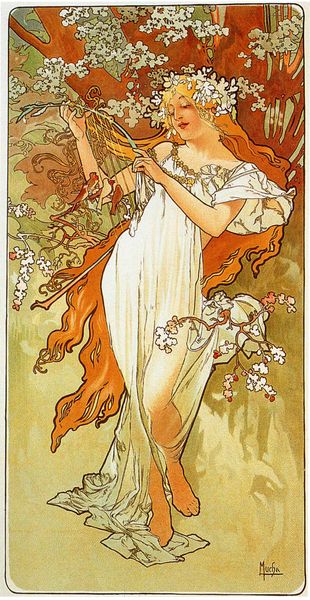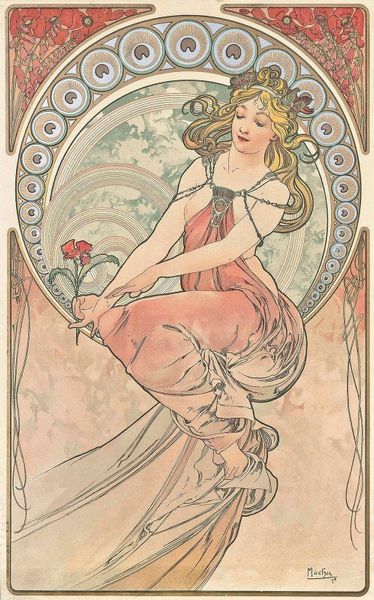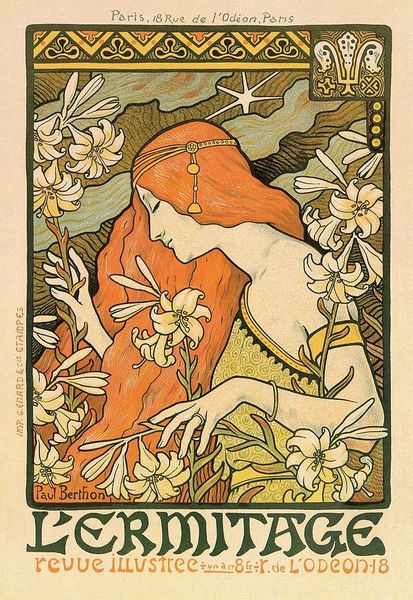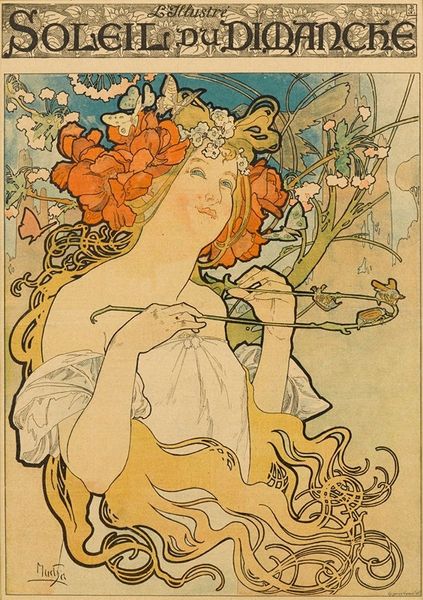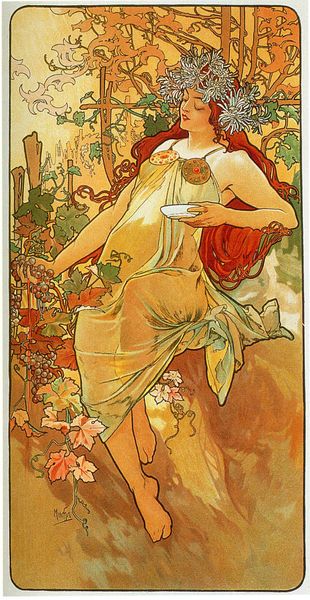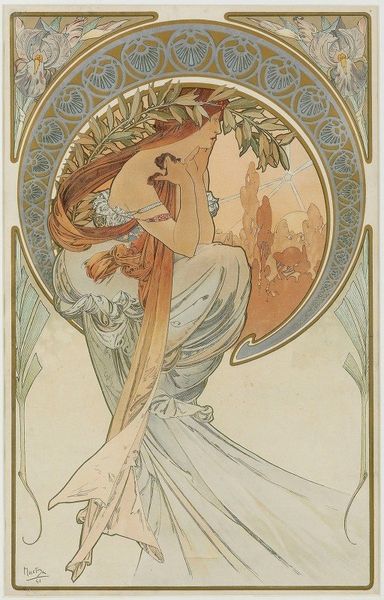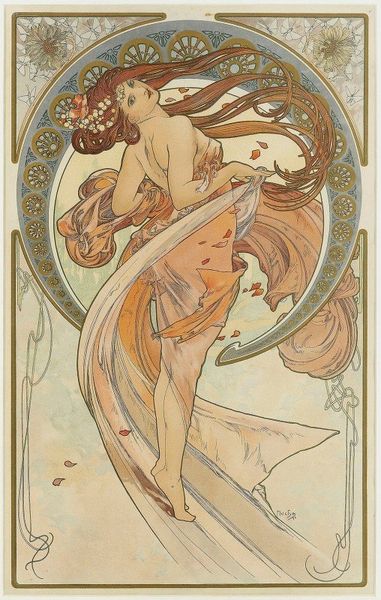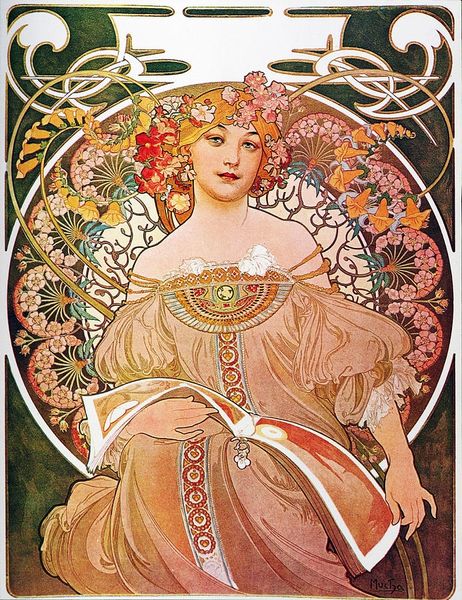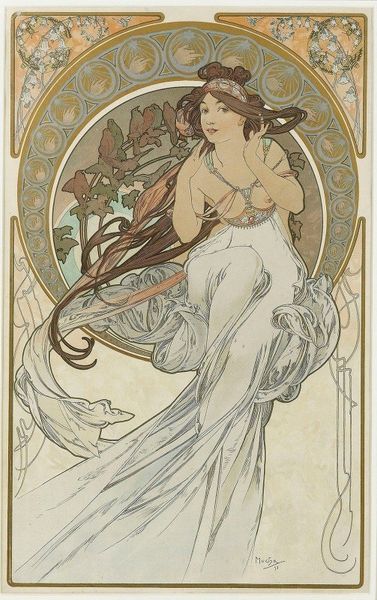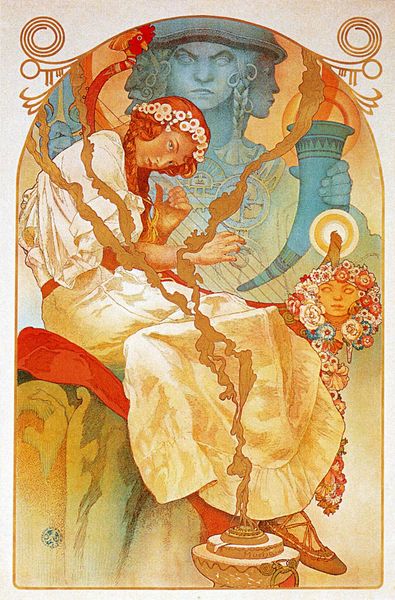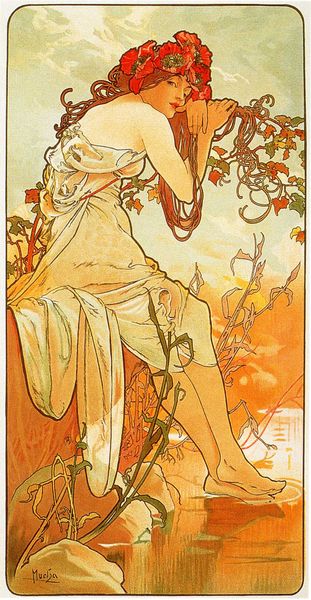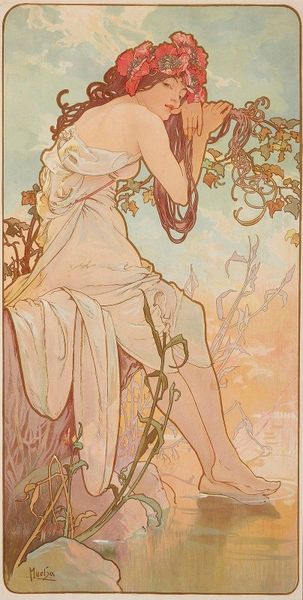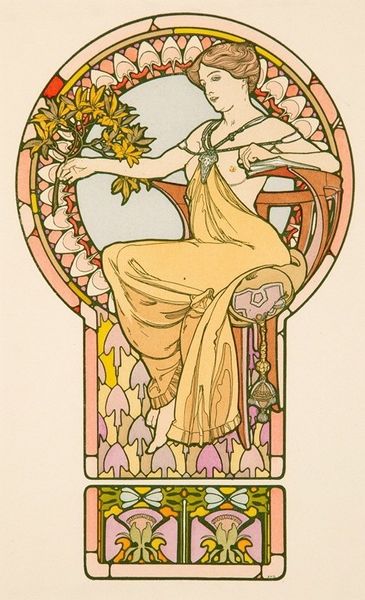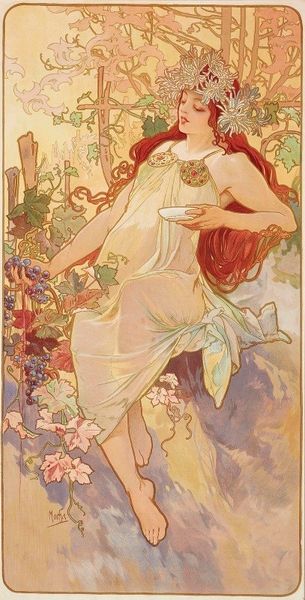
Copyright: Public domain
Editor: Here we have Alphonse Mucha’s "Painting," created in 1898 using tempera. It strikes me as intensely decorative, almost dreamlike. How do you approach interpreting this piece? Curator: Focusing purely on its formal aspects, consider first the line. Note the pronounced outlines, their sinuous quality so characteristic of Art Nouveau. How does the line delineate form and create a sense of rhythm? Editor: The lines definitely guide my eye around the composition, particularly following the curves of the figure and the circular motifs. Curator: Precisely. And consider the color palette. The muted, earthy tones create a sense of harmony. Note how Mucha employs a limited range, focusing on variations within these hues. This contributes to the artwork’s overall decorative effect, wouldn’t you agree? Editor: Yes, the color definitely reinforces the tranquil mood, especially compared to brighter, bolder colors that might create tension. What does the circular structure behind the figure add to the work? Curator: Let's address the shapes at play, not just color. The circle motif, repeated in various scales, acts as both frame and background. Observe how it echoes the curve of the woman's pose, reinforcing the visual unity. And finally, regarding the visual and its effect on us, how does the woman interact with the flower? Editor: She barely touches it. It seems to extend beyond the physical and focuses on some ephemeral or emotional expression. Curator: Yes. Now I will try to incorporate an interpretive paradigm. Editor: I feel I've come to appreciate how Mucha's masterful command of line, color, and shape contribute to the captivating sense of visual harmony, not to mention how to analyze those features separately before putting them together again!
Comments
No comments
Be the first to comment and join the conversation on the ultimate creative platform.
